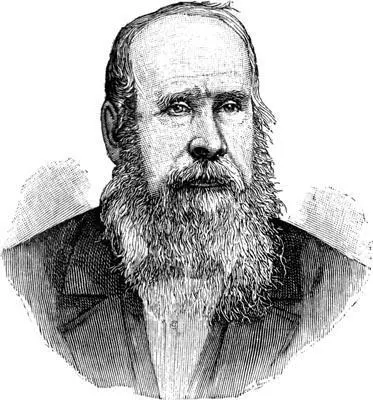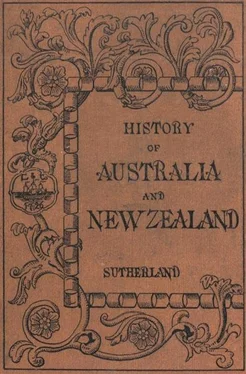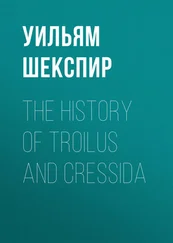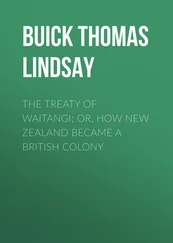CHAPTER XII.
THE DISCOVERY OF GOLD.
1. Importance of the Year 1851.—The year 1851 was in many ways an eventful one to Australia. In that year the colonies received from the Imperial Parliament the amended Constitutions they had so long expected. Tasmania, South Australia, Port Phillip, and Western Australia were now no longer under the absolute control of Governors sent out by the colonial authorities in England; they could henceforth boast the dignity of being self-governed communities, for, in 1851, they were invested with political powers which had previously been possessed by New South Wales alone. They now had the privilege of electing two-thirds of the members of a Legislative Council which not only had the power of making laws each for its own colony, but also of framing any new constitution for itself according to its own taste and requirements. Each colony kept its Legislative Council for only a year or two until it could discuss and establish a regular system of parliamentary government with two Houses and a Cabinet of responsible Ministers. Again, it was on the 1st of July in the same year that Port Phillip gained its independence; from that date onward its prosperous career must be related under its new title—Victoria.
But the event which made the year 1851 especially memorable in the annals of Australia was the discovery, near Bathurst, of the first of those rich goldfields which, for so long a time, changed the prospects of the colonies. For several years after the date of this occurrence the history of Australia is little more than the story of the feverish search for gold, with its hopes, its labour, its turmoil, and its madness; its scenes of exultation and splendid triumph, and its still more frequent scenes of bitter and gloomy disappointment.
2. Early Rumours of Gold.—For many years there had been rumours that the Blue Mountains were auriferous. It was said that gold had been seen by convicts in the days of Macquarie, and, indeed, still earlier; but to the stories of prisoners, who claimed rewards for alleged discoveries, the authorities in Sydney always listened with extreme suspicion, more especially as no pretended discoverer could ever find more than his first small specimens.
In 1840 a Polish nobleman named Strzelecki, who had been travelling among the ranges round Mount Kosciusko, stated that, from indications he had observed, he was firmly persuaded of the existence of gold in these mountains; but the Governor asked him, as a favour, to make no mention of a theory which might, perhaps, unsettle the colony, and fill the easily excited convicts with hopes which, he feared, would prove delusive. Strzelecki agreed not to publish his belief; but there was another man of science who was not so easily to be silenced. The Rev. W. B. Clarke, a clergyman devoted to geology, exhibited specimens in Sydney, on which he based an opinion that the Blue Mountains would, eventually, be found to possess goldfields of great extent and value. Some of these were taken to London by Strzelecki; and in 1844 a great English scientist, Sir Roderick Murchison, read a paper before the Royal Geographical Society in which he expressed a theory similar to that of Mr. Clarke. In 1846 he again called attention to this subject, and showed that, from the great similarity which existed between the rocks of the Blue Mountains and those of the Urals, there was every probability that the one would be found as rich as the other was known to be in the precious metals. So far as theory could go, the matter had been well discussed before the year 1851, but no one had ventured to spend his time and money in making a practical effort to settle the question.

Edward Hargraves.
3. Edward Hargraves.—About that, time, however, the rich mines of California attracted a Bathurst settler, named Edward Hargraves, to seek his fortune on the banks of the Sacramento; and though, among the great crowds of struggling and jostling diggers, he met with but little success, yet he learned the methods by which gold is discovered and secured, and laid the foundation for adventures in Australia which were afterwards to bring him both wealth and renown. Whilst he toiled with increasing disappointment on one of these famous goldfields, the scenery around him, and the appearance of the rocks, recalled to his memory a certain secluded valley beyond the Blue Mountains, which he had visited thirteen years before; the notion floated vaguely through his mind that, perhaps, in that silent spot, there might lie great treasures, such as he saw his more fortunate companions from time to time draw forth from the rocks and soil around him. Day after day the image of that winding creek among the hills near Bathurst recurred with increasing vividness to stimulate his imagination and awaken his hopes. At length this feeling impelled him to seek once more the shores of Australia in order to examine the spot which had so often been present to his day-dreams. He lost no time in sailing, and scarcely had he arrived in Sydney ere he set out on horseback to cross the Blue Mountains. On the 11th of February, 1851, he spent the night at a little inn a few miles from the object of his journey, and shortly after dawn he sallied forth on his ride through the forest, carrying with him a spade and a trowel and a little tin dish. In the cool air of the morning the scent of the spreading gum trees braced up his frame as he plunged deeper and deeper among those lonely hollows and wood-clad hills. In an hour or two he reached the well-remembered spot—the dry course of a mountain torrent which, in rainy seasons, finds its way into the Summerhill Creek. He lost no time in placing a little of the grey-coloured soil into his tin dish, and at once carried it to the nearest pool, where he dipped the whole beneath the water. By moving the dish rapidly, as he had learned to do in California, he washed away the sand and earth; but the particles of gold, which are more than seven and a half times heavier than sand, were not so easily to be carried off. They sank to the corner of the dish, where they lay secure—a few small specks, themselves of little value, yet telling of hidden treasures that lay scattered in all the soil around.
A few days were spent in a careful examination of the neighbouring valleys, and when he was absolutely certain that the hopes he had so warmly indulged would not prove empty, he set out for Sydney, taking care, however, to breathe no word of what he thought or of what he had proved. On the 3rd of April he wrote a letter to the Colonial Secretary, in which he stated that, if the Government were willing to give him £500, he would point out localities in New South Wales where gold was abundantly to be found. In reply, the Colonial Secretary announced that no preliminary reward could be given; but that, if he chose first of all to point out the localities, he would afterwards be recompensed in proportion to the results. He accepted these conditions; and Mr. Stutchbury, the Colonial Geologist, was sent to accompany him to the Summerhill Creek. On the 8th of May they set to work, and soon obtained several ounces of grain gold; on the 13th, they discovered a single piece worth £30, and next day Mr. Stutchbury reported to the Government that he had seen enough to convince him that the district was rich in the precious metal. Five days afterwards, the little valley of the Summerhill contained four hundred persons, all stooping over the creek in a row about a mile long, each with a dish in his hand, scarcely ever raising his head, but busily engaged in washing the sand for gold. Lumps were frequently found of value varying from £5 to £200. A week later, there were a thousand persons at work on the creek near the formerly lonely gully.
Читать дальше













